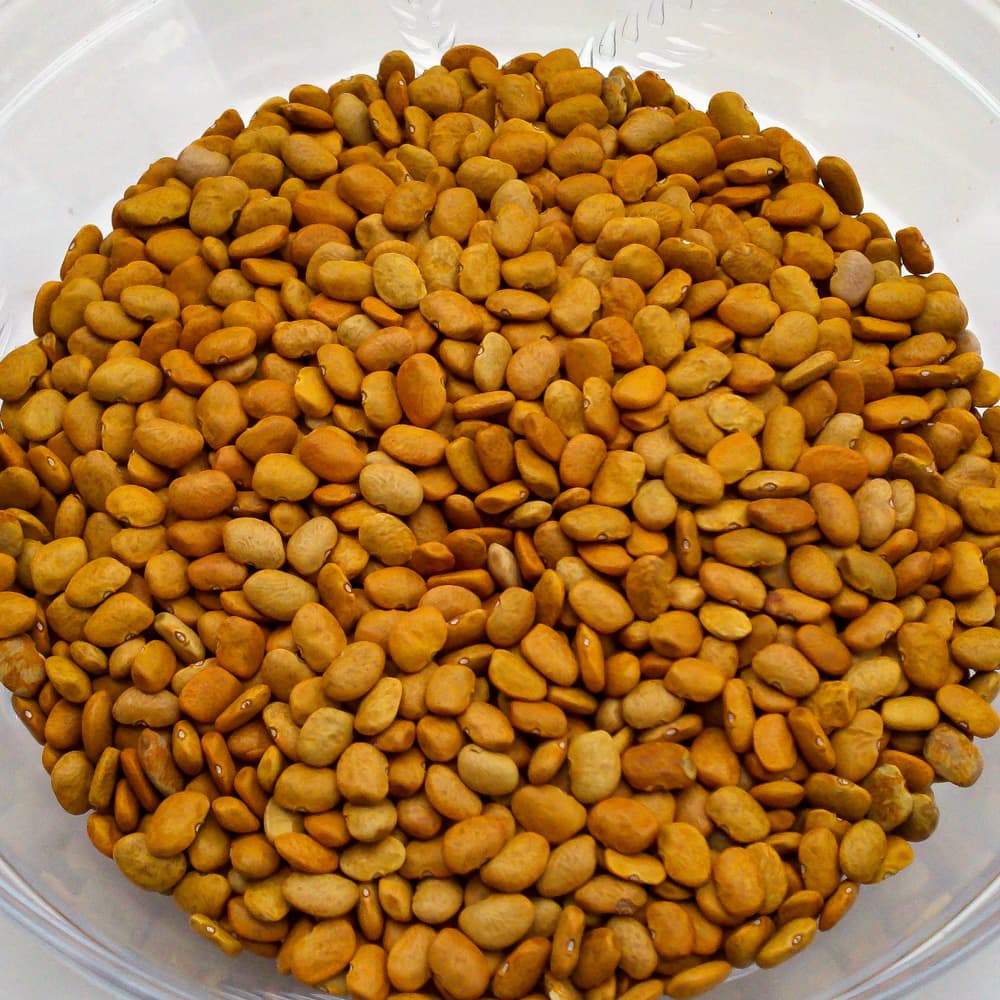Tepary Bean, Sacaton Brown (Organic)
Phaseolus acutifolius. Orange-Tan. 85 days.
Tepary beans are small, flat beans, traditionally grown by Native Americans in the desert Southwest. Amazingly drought and heat tolerant, they prefer sandy alkaline soils, but Sacaton Brown performs very well for us even in our relatively heavy, acidic soil and cool climate. Tepary beans have more protein and higher fiber than common beans, and maintain their shape when cooked. This variety comes to us via Native Seeds/SEARCH, who says it is commercially cultivated by the Gila River Indian Community where it is known as S’oam bawi.
| Geographical Origin |
|---|
Direct sow 1” deep when soil temps are warm, ideally by early-July. Plant at 4-6” in-row spacing with 12” between rows. This desert plant is very heat and drought tolerant; do not over-water. To avoid shattering, pull entire plants when pods begin to dry and allow to after-ripen before processing. Collect seeds from pods that are fully dry. Shell by hand or by dancing on the dry pods, winnow or screen to clean. Test for dryness with a hammer – dry beans shatter, moist beans squish.
Seed Saving
Tepary beans are primarily self-pollinating and do not need isolation for seed saving purposes.





Haley S (verified owner) –
Where did you grow this variety? Washington
I grew these for the first time this year (2023) in Western WA to build up a stock of food that would grow under drought conditions. Though I read elsewhere that people had trouble getting their teparies to flower, mine did and we were able to save seed and make a (just one) dish from the rest.
Cultivation: I wanted to water these minimally, in order to simulate the conditions that they’re supposed to like best. Because of oversowing, I did have to provide some irrigation, but really quite minimal compared to the common bush beans I grow. That’s what folks were saying had the biggest impact on flowering: too much water, and all that the teparies want to do is make leaves. Ours flowered, set seed, and dried down fairly speedily. Yield was decent, but remember these are very small beans.
Culinary qualities: they cook like common beans, so don’t treat them like lentils because of their size. Soaking or pressure cooking is a must. Perfectly delicious, if unremarkable as a distinctly different bean, in a simple preparation cooked with onions and garlic, served with bread, olive oil, sliced tomatoes, and green onions (a la foul mudammas).
These won’t be an every year dry bean for us, but a great option to have with the climate changing so significantly.
Upvote if this was helpful (2) Downvote if this was not helpful (0) Watch Unwatch Flag for removal